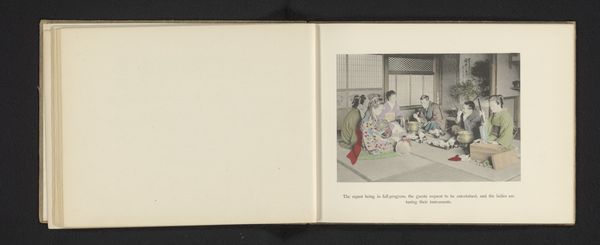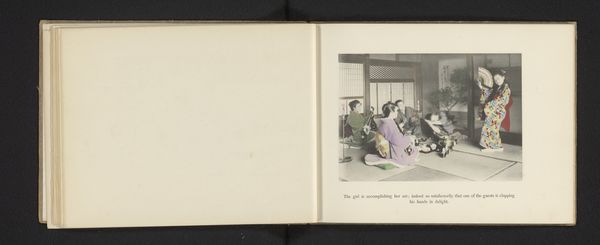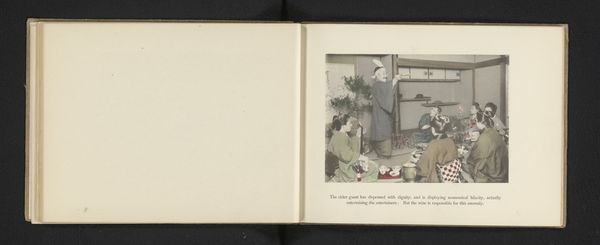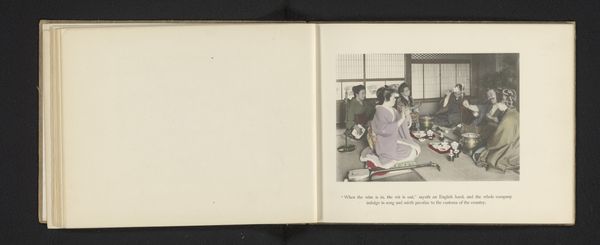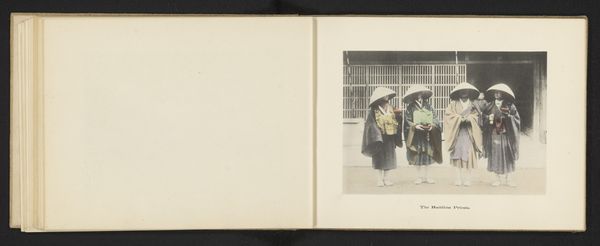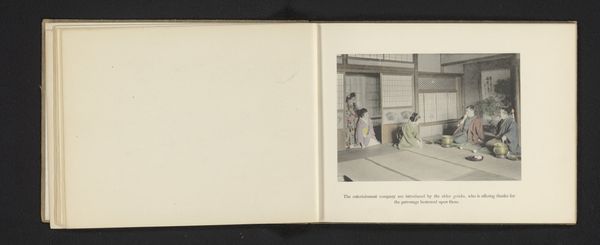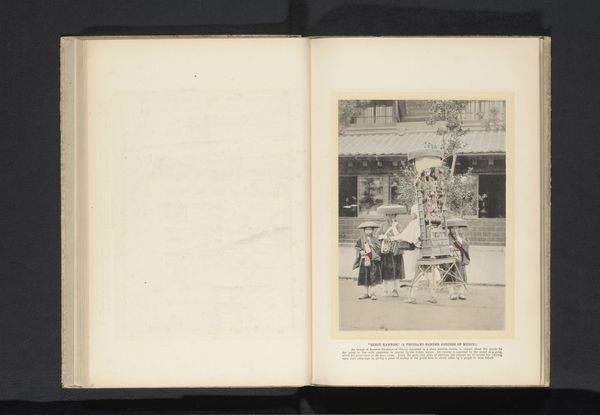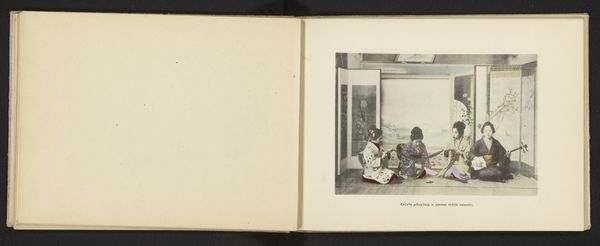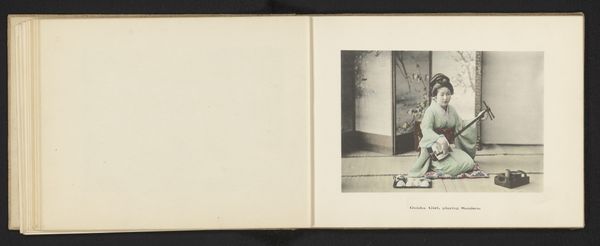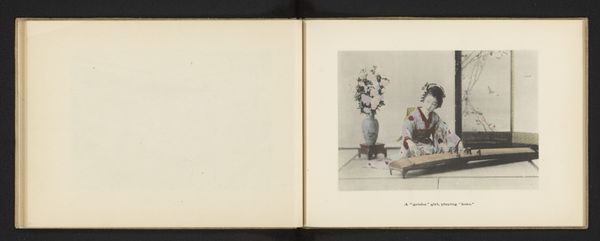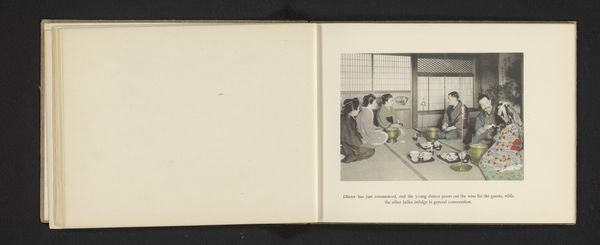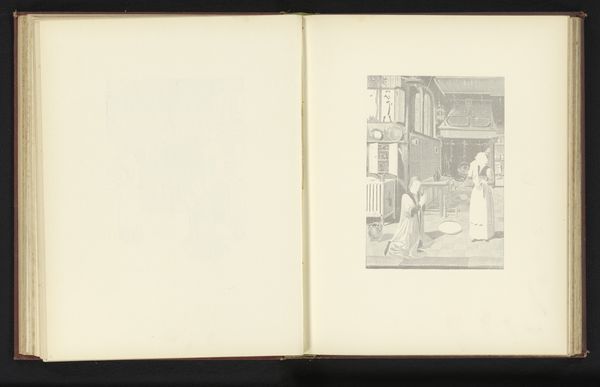
photography
#
photography
Dimensions: height 105 mm, width 151 mm
Copyright: Rijks Museum: Open Domain
Curator: Welcome! We’re looking at a hand-colored albumen print attributed to Kōzaburō Tamamura, entitled "Two Geishas and Two Men Dancing in a Tea House in Japan," likely created between 1896 and 1906. Editor: The instant impression is a study in balance. It's got a dynamic yet strangely static quality, maybe that hand-tinted color lends a sense of controlled vibrancy? Curator: Indeed. The medium itself, photography printed using albumen and then painstakingly hand-colored, reveals much. It points to the booming tourism industry catering to Western audiences keen on consuming romanticized images of Japan. These objects existed within a market of curiosity. Editor: Ah, I see what you mean. It's not simply a document; the construction of the scene is key. Look at the arrangement—the subjects almost stage their revelry amid what seem like props. This carefully planned dynamism suggests Japonisme filtered through a very Western lens. What do you make of the dance itself? Curator: That "dance" feels significant—probably arranged too— given it’s situated within the tea house setting, a space heavily laden with social and economic rituals. Observe also the various tableware strewn around - suggesting leisure. These objects perform in conveying an atmosphere or lived reality for the consumption of a different viewership. Editor: So it isn’t just the image *of* the scene, but the performative labor that goes into staging that ideal for the photographer and ultimately, a buyer? Interesting how the layers of representation compound. The color itself almost flattens the perspective. Curator: Exactly. This highlights the mediated nature of cultural exchange during that time and perhaps questions authenticity in representation. Editor: It certainly prompts reflection on our gaze. The choice to color specific areas also directs the eye and underscores what was deemed noteworthy about Japanese culture for outside audiences. Thanks to Tamamura's piece, we gain insights not just into Japanese aesthetics but also global markets. Curator: A fruitful conclusion, reflecting on both the aesthetic experience and the conditions of its making!
Comments
No comments
Be the first to comment and join the conversation on the ultimate creative platform.
